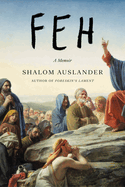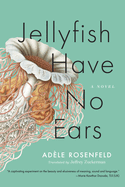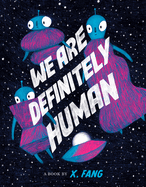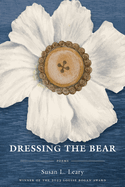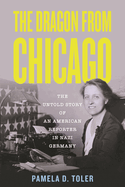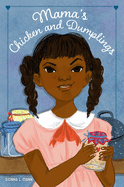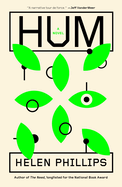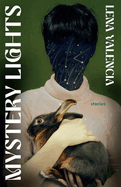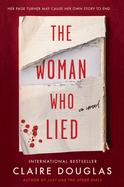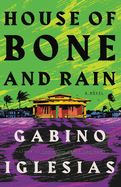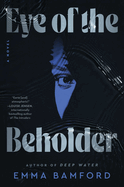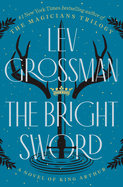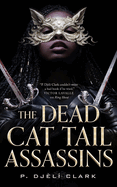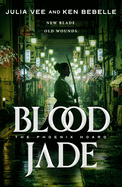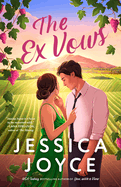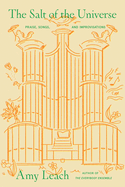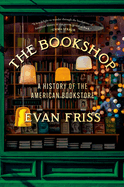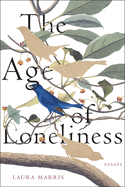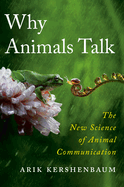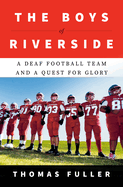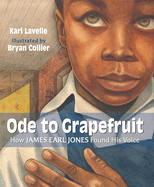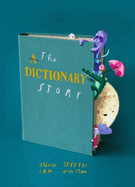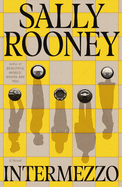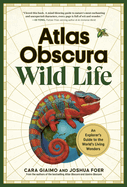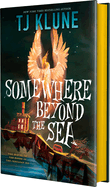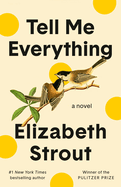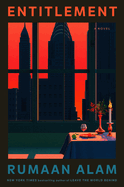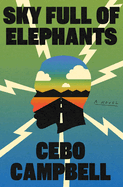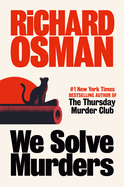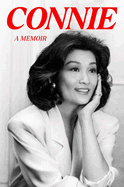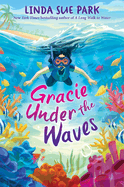Friday, August 9, 2024
Among this week's exceptional titles, we review Shalom Auslander's "outrageously funny second memoir," Feh, about confronting his profound self-loathing with "humor and heart-wrenching detail"; as well as French novelist Adèle Rosenfeld's debut, Jellyfish Have No Ears, "a strange, haunting story of sensory presence and absence, language and loss, relationships and choices." And for younger readers, we spotlight We Are Definitely Human by X. Fang, "a fabulously illustrated, rib-tickling, and affecting testament to the benefits of kindness and community spirit"; and Mama's Chicken and Dumplings by Dionna L. Mann, a "sweet and funny novel" about a Black girl in the 1930s with a matchmaking plan for her mother.
In The Writer's Life, conservationist authors Maya Gabeira (Maya and the Beast and Maya Makes Waves) and Hayley Rocco (Hello, I'm a Pangolin and Hello, I'm a Sloth) share their passion for the natural world and a vision for the future of animal life.
Jellyfish Have No Ears
by Adèle Rosenfeld, transl. by Jeffrey Zuckerman
Adèle Rosenfeld's Jellyfish Have No Ears is a strange, haunting story of sensory presence and absence, language and loss, relationships and choices. Translated from the French by Jeffrey Zuckerman, this first novel follows a young woman whose limited hearing has left her always straddling the experiences of the hearing and the deaf. Her progressive hearing loss eventually poses a choice between a cochlear implant and profound deafness.
In a world she finds increasingly incomprehensible, Louise navigates work, friendship, and a romantic relationship with a hearing man. Louise is accompanied as well by characters who are hallucinations or creations of her imagination offering valuable advice. Jellyfish is bursting with sensory descriptions, including sounds heard and missed, "the warmth of timbres, this soft sheen of wind, of color, of all sound's snags and snarls." Visual details are evocative and often surprising: "eyes as blank as an ice floe after an orca had gone by with a penguin in its mouth." The effect of this unusual perspective is riveting.
Louise ponders large, philosophical questions of whether she will still be herself if she agrees to an implant. In Zuckerman's translation, Louise's voice on the page is by turns stark, stoic, and dramatic. As those around her pressure her to take the implant or to embrace deafness, Louise reveals a strong personality: fiercely obstinate and attached to her vibrant interior world.
Jellyfish Have No Ears is a curious and intensely mind-bending exploration of both the loss of a sense and the potential richness of life with an invisible disability. Imaginative and spellbinding, this novel is unforgettable. --Julia Kastner, librarian and blogger at pagesofjulia
Discover: This engrossing first novel illuminates an experience of hearing loss that is both frightening and beautiful, filled with surprising imagery.
Hum
by Helen Phillips
The challenges of motherhood in an advanced technological age is the intriguing premise behind Hum by Helen Phillips (The Need). Set in an unnamed, colorless city in the near future, Phillips's ingenious sixth novel accelerates many of our present-day concerns about artificial intelligence. Hum contrasts technology's nonbiological competence with a mother's human fallibility, and provokes readers to ponder the limits and distortions of each.
May and her husband, Jem, are a financially strapped couple with two children, Lu and Sy. Bad air quality, a lack of greenery under a birdless, climate-ravaged sky, and 24-hour surveillance form the ominous backdrop of their city life, the air "abuzz with data." Robots called "hums" are ubiquitous, performing tasks as varied as doctor assistants and government workers.
Against this futuristic scenery, Phillips's protagonist is a timeless portrayal of maternal love and angst, doing her best to juggle family responsibilities and maintain her sanity. May recently lost her job refining AI capabilities because the system she was working on soon "exceeded human training." Desperate to make ends meet, she participates in an experimental trial in exchange for a large lump-sum payment. May then splurges on a family vacation to the Botanical Garden, the catalyst for a series of calamitous events that will call into question everything she holds dear in her life.
Phillips cuts through the bleakness of the fictitious world she has created by transporting readers deep inside May's psyche, the tumultuous beating heart of the novel, to witness the tender humanity no amount of technological advancement can destroy. --Shahina Piyarali
Discover: A much-anticipated family vacation takes a dark, calamitous turn in this intriguing novel about motherhood set in a technologically advanced future.
Villa E
by Jane Alison
Jane Alison's fifth novel, Villa E, is an impressionistic work of historical fiction that imagines the fraught relationship between Irish designer Eileen Gray and Le Corbusier, the Swiss-French giant of modernist architecture, surrounding a house on France's Côte d'Azur. The intriguing story of the clash between these two strong-willed artists, despite its brevity, raises some vexing questions about gender relations, creativity, and professional rivalry.
In chapters that shift between the perspectives of Eileen and Le Corbusier (known here as "Le Grand"), Alison (Meander, Spiral, Explode), who teaches creative writing at the University of Virginia, describes the self-taught architect Eileen's innovative design of a house that is "intimate and modern but not a machine." In the late 1930s Le Corbusier is invited to lunch, and immediately is seized by the distinctive qualities of this "alarmingly elegant, intelligent place" that's "made not only in Le G's own style but an experiment and critique of his work." During an extended stay alone at the house, he takes the shocking step of covering some of its stark white walls with sexually explicit drawings.
In framing this controversial encounter, Alison shapes vivid interior lives for her two principal characters. Of the pair, Le Corbusier's is the more substantial, as he oscillates between admiration for Eileen's work and profound creative jealousy. The famed architect also reflects on his marriage and a long history of infidelity that appears to color his view of Eileen and her work. Alison's novel is a provocative glimpse of the short but intense intersection of these two deeply creative and idiosyncratic lives. --Harvey Freedenberg, freelance reviewer
Discover: Jane Alison's fifth novel is a brief character study of the clash between two key figures of modernist architecture--Le Corbusier and Eileen Gray.
Mystery Lights
by Lena Valencia
Mystery Lights, Lena Valencia's debut story collection, offers 10 genre-bending tales, mostly set in the American Southwest, that are as thoughtful as they are full of wonder. A perfect marriage of quiet character insight and pulpy plot, these stories entertain as they enlighten.
Valencia's stories range from the grounded to the supernatural. Some stories lean toward more realistic, albeit revelatory, conflicts, such as "Bright Lights, Big Deal," in which a recent college graduate struggles to find her footing in New York City while starting a social-climbing blog. Meanwhile, surrealist obsession takes over in tales like "The Reclamation," which follows a group of women into the desert for a days-long retreat with a viral lifestyle guru that turns violent, fast. With cinematic sensibilities, Valencia excels at blurring the lines between the literary and the commercial. Her perceptive handling of characters allows quieter, existential insights to serve as the eye of the storm amidst rapidly progressing plots.
The craft behind constructing such breakaway-train plots should also not be underestimated. The fast-paced advance of horrors gives many of Valencia's tales a heartbreaking but nonetheless breathtaking sense of inevitability. The more characters try to exert control, the less in control of their own stories they become. The tender touch of endings like that in "Bright Lights, Big Deal" are well-executed, but just as impressive are the perfectly timed punches of "The Reclamation." Using the raw, strange setting of the desert, and its uneasy proximity to the glossy grit of Hollywood, Valencia probes the dark obsessions her characters have with control and sublime spectacle, power and the surprising catharsis of a lack thereof. --Alice Martin, freelance writer and editor
Discover: Lena Valencia's genre-bending debut story collection follows its characters down the paths of chaotic transformations, both real and imagined.
Mystery & Thriller
The Woman Who Lied
by Claire Douglas
Bolstering the case that beach reads shouldn't be restricted to frothy romances and sudsy melodramas are novels like Claire Douglas's The Woman Who Lied, a consuming escapist thriller lubricated with secrets and lies.
One day, bestselling mystery writer Emilia Ward receives a curious package at the London home she shares with her husband and children; the parcel has no return address or stamp--it's been hand-delivered--and contains a broken-necked ceramic seagull. Emilia registers that Detective Inspector Miranda Moody, star of her popular mystery series, has a fear of seagulls. Some days later, Emilia finds a troll doll dangling from a tree on her property. Troll dolls were featured in her second DI Moody mystery. It's now clear to Emilia that someone is launching a scare campaign against her using motifs plucked from her book series. When something happens that's straight out of the final, forthcoming Moody book, which has been seen by only Emilia's publisher and inner circle, she realizes that someone close to her is behind the intimidation. After a member of her circle is murdered, Emilia fears she's next.
Douglas (Do Not Disturb; Then She Vanishes) executes her ingenious premise with such nimbleness that the book's unremarkable prose won't likely dampen the reading experience. Chapters from Emilia's perspective are braided with excerpts ostensibly from her mystery writing and, eventually, with chapters from another point of view entirely. Collectively, these strands harbor many intriguing possible answers to the question implicit in the book's title: Which woman is lying? --Nell Beram, author and freelance writer
Discover: This novel, centered on a scare campaign launched against a bestselling mystery writer, is a consuming escapist thriller lubricated with secrets and lies.
House of Bone and Rain
by Gabino Iglesias
Gabino Iglesias delivers a propulsive supernatural thriller, House of Bone and Rain, set in San Juan on his native island of Puerto Rico, where the inequities are many: "the thing about Puerto Rico, especially if you're poor, is that there's a lot going on--death, drugs, gangs, violence--so you either grow up quickly or you don't get to grow up at all." Iglesias (The Devil Takes You Home; Zero Saints) introduces a quintet of do-or-die buddies since fourth grade: impulsive Bimbo, surfer Tavo, moody Paul, methodical Xavier, and most-of-the-time-narrator Gabe. They're "Brothers, really... like the tight-knit group of kids in a Stephen King novel, except with three brown dudes and two Black ones running around and getting in trouble."
On the last day of high school classes, Bimbo's mother, Maria, is gunned down while working at the door of the Lazer Club. Bimbo vows revenge at her open casket. The rest pledge their cooperation to kill her killers, to "make this right." Brutality and blood beget confessions that reveal an untouchable drug lord is involved. Bimbo's determination only multiplies: Maria's "death had turned her into something else, a glue that held us together." The destructive deluge of Hurricane Maria--"the Big One"--further underscores Bimbo's vicious rampage.
Corpses, clairvoyants, traitors--and specters with gills!--populate Iglesias's vengeful frightfest. He writes with a steely resignation, mirroring his characters' youthful tunnel-vision. He bestows only Gabe with first-person autonomy, and although Gabe's chapters are occasionally interrupted, additional viewpoints can only temporarily distract from--and perhaps warn against--fatal reckonings. In the end, "all stories are ghost stories." Let the haunting begin. --Terry Hong
Discover: Gabino Iglesias's dynamic thriller House of Bone and Rain wends through San Juan, Puerto Rico, chasing five teens seeking revenge for the murder of one of their own's beloved mother.
Eye of the Beholder
by Emma Bamford
Sooner or later, someone was going to do it: write a novel that reimagined Alfred Hitchcock's Vertigo with a gender swap. (As for the 1958 film, it was based on the French novel The Living and the Dead by Pierre Boileau and Thomas Narcejac.) Eye of the Beholder by Emma Bamford (Deep Water) is a worthy homage as well as an utterly original spin on the color-noir classic.
As the novel opens, narrator Madeleine Wight, a London-based writer, is at a crowded tube station when she sees someone she knows. Maddy pursues the man and comes face-to-face with him: "Scott looking at me. Back from the dead."
The narrative careens back in time several months, to when Maddy begins ghostwriting a memoir for Angela Reynolds, a stratospherically successful American cosmetic surgeon. Maddy is holed up at Dr. Reynolds's Scottish Highlands estate, but the doctor isn't there: Maddy conducts interviews with her by video call (and wonders why working from home wasn't an option). Maddy isn't alone in the house, though: she's sharing it with Dr. Reynolds's business partner, a swoony guy named... Scott.
Bamford's reconception of Vertigo is inspired: its gender-flipped premise removes the predatory-guy aspect of Hitchcock's film, making the power dynamic between Maddy and Scott comparatively balanced. What's more, Maddy's thoughts on beauty and the aesthetics industry function as a rejoinder to the movie's iconic use of the male gaze. At several points in Eye of the Beholder, readers will perceive clearly what Maddy doesn't, but then maybe she hasn't seen Vertigo. --Nell Beram, author and freelance writer
Discover: Set in London and the Scottish Highlands, this gender-swapped reimagining of Alfred Hitchcock's Vertigo is a worthy homage as well as an utterly original spin on the color-noir classic.
Trouble in Queenstown
by Delia Pitts
Evander "Vandy" Myrick didn't want to return to her hometown of Queenstown, N.J., but she needs to deal with the recent death of her 19-year-old daughter in Trouble in Queenstown, the promising start of a series by Delia Pitts. The move meant leaving police work in New Brunswick for an often boring job as the private investigator for an attorney. But it also allows Vandy to spend time with her father, a well-respected retired police officer with advanced dementia.
Vandy mostly does background checks or process serving, but the pay is good. She also knows nearly everyone--and their secrets--in Queenstown, where Vandy is one of the Black residents within "the capital of Klan activity in Mason County." She notes, "Privacy was hard to come by in Q-Town, and worth guarding." Her new assignment seems routine. She's hired to prove allegations of infidelity against Ivy Hannah, the wife of Leo Hannah, whose aunt is Queenstown's popular and powerful mayor. When Vandy arrives at the Hannah home to present her report that Ivy appears innocent, she finds Leo on the floor next to the grievously injured Ivy. The attack is blamed on cab driver Hector Ramírez, who was shot and killed by Leo during the struggle. Self-defense seems obvious, but Vandy isn't sure, so she accepts requests to investigate further from Ivy's devoted father and Hector's teenage sister.
Family secrets and bigotry intersect, revealing uncomfortable facts and corruption in Queenstown while elevating the tense plot. Vandy's tough exterior conceals her grief for her daughter and her efforts at coping with her father's dementia. Scenes in which Vandy tries to connect with him add poignancy to Trouble in Queenstown. --Oline H. Cogdill, freelance reviewer
Discover: A private investigator becomes embroiled in a murder investigation while dealing with grief over her deceased daughter and her father's dementia in this promising thriller.
Science Fiction & Fantasy
The Bright Sword: A Novel of King Arthur
by Lev Grossman
The Bright Sword by Lev Grossman (The Magician King; Warp) is an inventive take on Arthurian legend that's sure to appeal to readers who enjoy high fantasy and those looking for a fresh, inclusive spin on familiar tales. The novel begins as 17-year-old Collum, a talented fighter, treks from the island of Mull to join the legendary knights of the Round Table, only to discover that he's too late. Arthur is dead, as are most of his knights, and Camelot is in shambles, thanks to rogue factions within Arthur's family.
Only a handful of the knights of the Round Table are left, including Sir Bedivere, who was hopelessly in love with Arthur; Sir Dagonet, who had been the court's fool until Arthur knighted him; Sir Dinadan, who made a treacherous bargain with a fairy; and Sir Palomides, who is a Muslim from Baghdad and has learned that "some Europeans were good, some were bad. All were tall, drunk, promiscuous and incredibly smelly."
Collum teams up with this motley assortment of knights and a disgruntled sorceress to restore order to England and redeem Arthur's legacy. Can they save the day, or is England now lost because Arthur was truly "the last light in the darkness"?
The Bright Sword is Arthurian whimsy at its finest. Flashbacks reveal the origin story of each knight against their current, chaotic quest. A hefty tome that mixes magic with indomitable curiosity, The Bright Sword makes for fascinating reading that will lure in readers of Mary Stewart, T.H. White, or T.J. Klune. --Jessica Howard, freelance book reviewer
Discover: This fresh take on Arthurian legend sends a young knight and a few stragglers from the Round Table on a quest in the wake of Arthur's death.
The Dead Cat Tail Assassins
by P. Djèlí Clark
In P. Djèlí Clark's intrigue-laden fantasy novella The Dead Cat Tail Assassins, an undead assassin receives a mission she can't carry out, but which her deadly serious oath won't allow her to abandon.
Eveen is a member of an assassins guild in the city of Tal Abisi. Before her death, she swore to serve Aeril, the matron goddess of assassins, and, once resurrected, she began her century of indenture, bound by three rules. The contract must be just, as determined by the guild. The assassin must kill only the contracted victim. And an accepted job must be carried out. But Eveen is assigned an anonymously commissioned contract with an urgent deadline of dawn the very next morning, only to discover that the intended victim appears to be her own younger self, from the living days she no longer remembers. Faced with the wrath of her own organization, not to mention her goddess, Eveen must uncover who wants her to assassinate herself and find a way to void the contract lest a paradox cause her to blink out of existence.
This novella makes every page count, with backstabbing and actual stabbing to spare. Clark (A Master of Djinn; Ring Shout) fills the book with razor-sharp dialogue as well as weapons. He paints a dynamic picture of a bustling fantasy city and the gods and goddesses who control it. Though this novella is satisfying on its own, readers would likely be thrilled if Clark were to revisit this world and these prickly but endearing characters. --Kristen Allen-Vogel, information services librarian at Dayton Metro Library
Discover: Banter and backstabbing fill P. Djèlí Clark's tight novella about a fantastical assassins guild.
Blood Jade
by Julia Vee and Ken Bebelle
Asian American writing duo Julia Vee and Ken Bebelle (Ebony Gate) once again lure readers into a fascinating, dangerous world of magic and dragons with Blood Jade, the second stellar entry in their Phoenix Hoard series.
Emiko Soong, the recently chosen Sentinel of San Francisco, Calif., has been called back to her family home in Tokyo. Her beloved younger brother, Tatsuya, has asked for her aid in training him for a coming-of-age tourney at Lóng Kǒu school, and she cannot deny him. She will also have to face her clan for the first time since deliberately severing her connection to family tradition by giving up her position as the Soong family Blade. But someone has set an assassin on Tatsuya, and Emiko stands in their way. As the heir to the Soong clan, Tatsuya's death would sever the family's line and remove their influential family from the eight Hoard custodian clans. The evil force that stalks them doesn't know, however, that becoming the Sentinel has changed Emiko's magical gifts in powerful ways. She will have to call on all her newfound talents and allies to save the people she has vowed to defend.
Through Vee and Bebelle's lush descriptions, Tokyo becomes a brilliantly colored, lethal backdrop for the novel's distinctively creative characters. This intriguing tale boasts a fresh and compelling plot that will keep readers guessing as surprising details about Emiko and her background are revealed. Although Blood Jade can be read as a stand-alone novel, readers will surely want to also read the first volume in what is proving to be an excellent urban fantasy series. --Lois Faye Dyer, writer and reviewer
Discover: In this stellar sequel, swordswoman Emiko Soong uncovers family secrets and saves a dangerous world of magic and dragons from a vicious threat.
Romance
The Ex Vows
by Jessica Joyce
The Ex Vows is a steamy, delectable second-chance romance set in beautiful California wine country. Jessica Joyce (You, with a View) has created believably flawed characters who tiptoe toward another opportunity for happiness.
Georgia and Adam have been best friends since the sixth grade and widened their friendship to three when Eli moved to the Bay Area in high school. Eli and Georgia fell in love in college and dated for several years, but the trio remained extremely close. Georgia and Eli moved to New York City together but broke up 15 months later, and ever since Georgia came back to California alone, she and Eli have pretended to get along for Adam's sake.
It was easy enough with Eli living so far away to act like the three musketeers have been as close as ever. But now Adam is getting married, Eli is back for a long visit, and Adam's wedding arrangements keep going awry: the DJ bails, their venue burns down, and cake tasting is a ridiculous disaster. Adam begs Georgia, his best woman, and Eli, his best man, to work together to save his wedding. Soon Georgia and Eli are sharing a cottage at Adam's family winery and Georgia is trying very hard not to remember all the reasons she fell in love with Eli the first time.
The Ex Vows is thoughtful, nostalgic, and sure to make readers wistful for their own first loves. Plus, the hilariously awful things that keep happening to Adam and his fiancée are delightfully absurd, adding needed levity to Georgia and Eli's rather intense reconnection. --Jessica Howard, freelance book reviewer
Discover: This sexy second-chance romance brings a couple together again at the wine-country wedding of their mutual best friend.
Biography & Memoir
Feh: A Memoir
by Shalom Auslander
Feh is the title of Shalom Auslander's outrageously funny second memoir--and the Yiddish word for "yuck." With humor and heart-wrenching detail, Auslander (Foreskin's Lament; Hope: A Tragedy) confronts his deep-seated self-loathing and warns of how received stories can do psychological damage.
Auslander was in first grade when his ultra-Orthodox yeshiva teacher blindsided him with a fundamental story: "Man wasn't great. He wasn't even good." From creation onward, it seemed that humanity was nothing but a disappointment. The Old Testament's message, as Auslander absorbed it, was "You Suck." Every health and career setback he experienced later in life only served to confirm this. When his use of an unlicensed weight-loss drug landed him in the hospital with pancreatitis, it wasn't attempted suicide as some suspected, but a cry for help.
Feh features hilarious retellings of stories from the Bible and classic literature, as well as précis of the author's own short stories and other works. Auslander spins vivid set pieces from painful memories. Envious of women's beauty as a boy, he earned his father's contempt for blow-drying his hair; by contrast, he supported his son Lux's obsession with wigs and Beyoncé's dance routines. A notable strand sees Auslander break into writing for Hollywood. (He even managed to tap Philip Seymour Hoffman for a television pilot, but just two days after the series was green-lit Hoffman was found dead.)
The memoir is as iconoclastically funny as Auslander's fiction, but it's also reassuring as, with encouragement from his wife, Orli, and his psychiatrist, Ike, Auslander begins to overcome his self-hatred. --Rebecca Foster, freelance reviewer, proofreader and blogger at Bookish Beck
Discover: In this outrageously funny memoir, Shalom Auslander's Jewish upbringing has convinced him that he is worthless, and he works to overcome his self-hatred after a series of personal crises.
The Dragon from Chicago: The Untold Story of an American Reporter in Nazi Germany
by Pamela D. Toler
In her riveting 10th nonfiction book, historian Pamela D. Toler (Women Warriors) profiles reporter Sigrid Schultz (1893-1980), who ran the Berlin bureau of the Chicago Tribune for a decade and a half, and repeatedly warned her American readers about the rise of Nazism.
Born in Chicago to a Norwegian painter and a mother of multiethnic European descent, Schultz always considered herself American, though she spent decades living abroad. She worked as a teacher and a translator as a young woman before meeting several journalists from the Tribune as World War I ended. She took a job as a "combination interpreter and cub reporter," using her broad network of connections in Berlin to gain the interviews her colleagues wanted. The job gave Schultz the training she needed to become a star journalist, and eventually to head up the Tribune's Berlin bureau.
Toler's narrative paints a fascinating picture of a woman driven to hunt down the next story and to bring the truth to her readers. She reported on local and national politics, the growing military might of the Nazi Party, and the lives of ordinary Germans in Weimar-era Berlin. Toler charts the rise of the Nazis through Schultz's fastidious reporting on their activities and her clever ways of getting around the censors, including the use of a male pseudonym.
Toler exposes the discrimination Schultz often faced as a woman in male-dominated press offices, but also highlights her successes: her broad network of informants, her sharply reported articles, and her invaluable contributions to the Tribune. Insightful and meticulously researched, Toler's biography turns a well-deserved spotlight on Schultz and her career. --Katie Noah Gibson, blogger at Cakes, Tea and Dreams
Discover: Pamela D. Toler delves into the life of Chicago Tribune journalist Sigrid Schultz, who, while reporting from Berlin, warned American readers about the rise of Nazism.
The Salt of the Universe: Praise, Songs, and Improvisations
by Amy Leach
Amy Leach's third book, The Salt of the Universe: Praise, Songs, and Improvisations, upholds the singular spirit of Things That Are and The Everybody Ensemble with a deepening of personal and spiritual subject matter. Whimsical, frank, funny, shrewd, and ever unpredictable, Leach's phrasing and concepts continue to surprise, delight, and edify. Where her previous works explored the world with curiosity, awe, an endearing silliness, and joy, The Salt of the Universe picks up with a new focus on Leach's upbringing and the Seventh-Day Adventist Church in which she was raised.
Leach remains the master of the list, especially lists of the unexpected. Look out for how Walmart has taught her to find items she was not searching for, including "inflatable bathtub neck pillows and tropical Popsicles and Guinness Baltimore Blonde and misty-scented candles and Minions whistles." Her subjects include not only gods but music and poetry; babies generally and her own two children in particular; snake grass and daffodils; brown dwarf stars and muons; an "interior Texas" and an outdoor heart and everything in between; the wide, wide world, both the small and the large; and the wonder and wondrousness of all forms of art, life, and love. In examining her relationship with Adventism and religion in general, Leach can be drolly tongue-in-cheek, and though earnest, never unfun.
Leach has split from Adventism, but retains her sense of marvel and reverence at the vast and varied. She does not profess to prescribe, but will still inspire. Sincerely inquisitive and wildly, fancifully imaginative, Leach's perspective is a gift. The Salt of the Universe may be life-changing, even life-saving. --Julia Kastner, librarian and blogger at pagesofjulia
Discover: Playful, celebratory, wise, impertinent, Amy Leach turns her lyricism and wit on a fundamentalist upbringing and the wealth of experiences beyond.
History
The Bookshop: A History of the American Bookstore
by Evan Friss
"Bookstores, even the little ones, can shape the world around them. They already have," writes Evan Friss in The Bookshop: A History of the American Bookstore, a fantastic journey that delves into the impact of independent bookshops on the social and cultural fabric of the United States. And they are bookshops, as Friss points out, not bookstores--venues that navigate a careful balance between community and commercial spaces. The Bookshop traces these places, from Benjamin Franklin's existence as a "shopkeeper who sold books," whose efforts "can be viewed as attempts to unite the colonies through knowledge," through Boston's Old Corner in the 1800s and its introduction of browsing into bookshop culture, and all the way up to the modern day and the people who fight to keep these places open.
Bookshops have always been under threats, but they have also adapted to times and political climates, uniting communities across geographies, and shaping societies around them, through revolution, abolition, Pride, and the Black Lives Matter movement. Friss (On Bicycles: A 200-Year History of Cycling in New York City) reminds readers that above everything, people go to bookshops because they "often just want company," and that these hybrid "literary playgrounds and capitalist enterprises" are also "critical sites for intellectual, social, political, and cultural exchange" that "nurture existing communities and foster new ones." The Bookshop argues persuasively that not only are these institutions a crucial part of U.S. social and political history, but that they are also worth fighting for in the face of a new generation of technological and financial threats. Be sure to find a copy through your local independent bookshop. --Michelle Anya Anjirbag, freelance reviewer
Discover: Evan Friss's history of independent bookshops reminds bibliophiles why these spaces are the ideal places to get lost and escape reality.
Essays & Criticism
The Age of Loneliness: Essays
by Laura Marris
The Age of Loneliness, the debut by translator and creative writing professor Laura Marris, is a perceptive, moving collection of nine braided essays linking personal experience of loss with illuminating analyses of aspects of the climate crisis.
The late biologist E.O. Wilson coined the term "Eremocene" ("Age of Loneliness") for how the displacement of other animals is leaving people alone on a depleted planet. Disconnection from nature appears here as a modern ailment to which attention and purposeful action are potential salves. In "Lost Lake," Marris mourns the intimacy with the natural world she lost when her father died when she was 19. "Shadow Count" loops back to consider how she might rebuild the childhood knowledge of birdlife he instilled in her by participating in community science projects like the Christmas Bird Count.
Bereavement, career, and relationship struggles are threads in multiple pieces. A backdrop of biodiversity loss and the exploitation of nature puts such private matters into perspective, but never negates their gravity. In "Vertical Time," Marris contrasts her father's earnest 1984 cross-country road trip with highways' imperiling of animals through habitat fragmentation and roadkill. "Safer Skies for All Who Fly," a standout essay reminiscent of Helen Macdonald's longform journalism, is a devastating exposé of "bird strikes," the collisions between U.S. aircraft and birds in 2021. "The Echo," in the vein of Terry Tempest Williams's work, investigates ongoing ecological and health problems near Buffalo's Love Canal, a toxic-waste dump site.
Driven by curiosity and environmental conscience, these reflective essays ponder human responsibility and resilience. Fans of Cal Flyn and Lyanda Lynn Haupt can read them and feel less alone. --Rebecca Foster, freelance reviewer, proofreader and blogger at Bookish Beck
Discover: Laura Marris's affecting debut essay collection weaves together personal experiences of loss and loneliness with the wider environmental worries of the "Eremocene."
Nature & Environment
Why Animals Talk: The New Science of Animal Communication
by Arik Kershenbaum
Zoologist and Cambridge lecturer Arik Kershenbaum (The Zoologist's Guide to the Galaxy) examines the conversation methods of a handful of fascinating species in his thought-provoking popular science book Why Animals Talk: The New Science of Animal Communication. Kershenbaum synthesizes historic thought, original research, and his own contagious passion for the subject not to answer whether animals have language like humans but to reveal how and why they use the astounding communication methods they do have.
Wolves howl to contact pack members across great distances, and parrots can learn to speak in human voices. Kershenbaum's enthusiasm for his subjects is captivating: he takes the reader into the jungle where gibbons sing, under the sea to study the name-like signature whistles dolphins use to address each other, and into rock colonies of hyraxes, a tiny relative of elephants, where dominant males use complex songs to ward off competition for female attention. Kershenbaum considers animal-speak to be deeply fascinating despite the unlikelihood of developing a dolphin-to-human dictionary. As he says of chimpanzees, "No matter how similar to us, their communication is not like ours--it's precisely like theirs. As it should be."
Readers willing to let go of human exceptionalism and look at the world through the lens of animals' interactions with their environments and each other will find a rewarding exploration of communication and its impact on survival. Kershenbaum is open about the challenges facing researchers and the resulting limitations of their conclusions, acknowledging that science is merely on the frontier of this subject. This accessible survey proves animals have much to teach humans about communication if humans are willing to listen. --Jaclyn Fulwood, blogger at Infinite Reads
Discover: This engaging, accessible popular science book explores why and how animal communication methods work.
Sports
The Boys of Riverside: A Deaf Football Team and a Quest for Glory
by Thomas Fuller
In The Boys of Riverside, Thomas Fuller shares an uplifting, deeply inspiring true story about how--through hard work, determination, and skill--underdogs can beat the odds and triumph.
The story begins in 2021, when Fuller, a news correspondent serving as San Francisco bureau chief for the New York Times, received an e-mail about a high school football team in Riverside, at the California School for the Deaf--a 51-student, state-run public school. While the U.S. was still mired in the Covid pandemic, Fuller was drawn to the heartening story about the school and its undefeated football team, which was on its way to a winning season. Intrigued, he put his career on hold and spent the season culling stories of the Riverside Cubs, the history and formation of the deaf school, and the intricacies of Deaf Culture.
A captivating, life-affirming mosaic emerges. Fuller examines the lives, backgrounds, and families of key team players. He goes into the role visual synchronization played in pivotal game match-ups, and the many physical and athletic challenges that were conquered on the road to the championship, including a host of injuries and, in one case, homelessness. At the center of the huddle of players, Fuller also tells the story of deaf head coach Keith Adams and how he came to lead the team. Interwoven throughout are fascinating historical details about deaf history and how stigmas have evolved over centuries.
Fuller's all-encompassing narrative will hold great appeal for sports fans and general readers alike. This triumphant, hopeful story ultimately reveals the many virtues--personally and via teamwork--that combined to achieve the quintessential American Dream. --Kathleen Gerard, blogger at Reading Between the Lines
Discover: An inspiring true story about an all-deaf, California high school football team who beat the odds to become winners--in every sense of the word.
Poetry
Dressing the Bear
by Susan L. Leary
Susan L. Leary's fourth poetry collection, Dressing the Bear, won Trio House Press's Louise Bogan Award and was written in memory of her brother, Brian Lee Kilpatrick, who died by overdose in 2020 at the age of 29. By turns angry, wry, and brokenhearted, the poems vividly portray the lasting effects that addiction and grief can have on families.
Leary (A Buffet Table Fit for Queens) often addresses Kilpatrick directly. She explains in the opening poem, "If, Elsewhere," how composing autobiographical verse might offer her closure: "That you might finally/ leave me, Brother, let me/ tell you who you are..." She describes Kilpatrick as practical and poised for violence, someone who "walked through the world with a knife/ strapped to his hip. A boy of noble purpose, ready/ to stop a bullet or free the rubberbanded stems// of store-bought tulips." Innocuous memories from Leary's brother's early years return as irony. In the titular poem, Kilpatrick's grade-school sweetheart reappears at his funeral, while "Clean" contrasts fresh laundry with his inability to "kick drugs." The county jail where he spent time is a recurring setting.
Although her mother and professor try to cajole her into writing about happier subjects, Leary remains fixated on loss; blue is the predominant color. Repetition and alliteration reinforce her morbid focus, as when she likens ants to "pitch-dark pallbearers." Along with frequent water and animal metaphors, Leary includes prose paragraphs, riddle-like phrases, and two lines borrowed from William Carlos Williams. Ampersands usually replace "and," adding serif flourishes to the page.
Though they all circle bereavement, Leary's intense poems flicker with variety. --Rebecca Foster, freelance reviewer, proofreader and blogger at Bookish Beck
Discover: This moving poetry collection orbits the death by overdose of the poet's brother, vividly portraying the lasting effects that addiction and grief have on families.
Children's & Young Adult
We Are Definitely Human
by X. Fang
We Are Definitely Human is a fabulously illustrated, rib-tickling, and affecting picture book in which Mr. Li and his neighbors demonstrate the potential of kindness and cooperative spirit.
It's midnight when something crashes outside Mr. and Mrs. Li's house. Mr. Li investigates, only to find three strangers with "very big" eyes, "very blue" skin, and body shapes that are "very hard to describe." But Mr. Li doesn't worry because these strangers "are DEFINITELY human." Their spaceship (er, "car") has broken down and since Mr. Li is "a kind human," he offers to help. Mr. Li drives his guests to the store, and the people shopping there do "what kind humans do." They offer to help. Before long, there's a party in the woods, with food and dancing and "interesting conversations." At last, the repairs are made, and everyone waves goodbye. The car "float[s] higher and higher until it disappear[s] among the stars." The three visitors reflect on "the kindness of humans, [who] do what kind humans do--offer help to anyone who needs it."
X. Fang (Dim Sum Palace) has made an out-of-this-world picture book that features hilariously deadpan aliens and charming, though (maybe?) clueless, human protagonists (plus one wisely skeptical dog). Outrageously giggle-inducing dialogue from the aliens is characterized by non sequiturs and garbled syntax, and Fang revels in the disconnect between human expectations and alien quirks. Mixed media illustrations in strong purples, yellows, blues, and greens are a delight. This book's wonderful message of offering help where help is needed is wisely and gracefully delivered. --Lynn Becker, reviewer, blogger, and children's book author
Discover: We Are Definitely Human is a fabulously illustrated, rib-tickling, and affecting testament to the benefits of kindness and community spirit, as Mr. Li and his neighbors help three strangers.
Mama's Chicken and Dumplings
by Dionna L. Mann
Dionna L. Mann's first work of middle-grade fiction, Mama's Chicken and Dumplings, tells the darling story of a Black girl in segregated 1930s Charlottesville, Va., who hatches a plan to find her mama the perfect husband.
Ten-year-old Allie lives with Mama but wishes there were a man around the house: Mama wouldn't have to work so hard, and Allie could have "store-bought dresses with matching ribbons." That's when Allie comes up with the "Man-for-Mama Plan" and makes a map of all the eligible Black bachelors on West Main Street. Those who are a good fit--who can fix things, have kind smiles, and know how to sing--get a red heart above their names. A red heart means receiving a jar of Mama's chicken and dumplings, because another qualification is loving Mama's cooking! All is going well, and Allie sets her sights on Mr. Odin Johnson (an old classmate of Mama's) as a perfect fit. The plan sours when Mr. Coles, Allie's band teacher, shows an interest in Mama. Even worse? Mr. Coles is "NOT-friend" Gwen's uncle. How will Allie steer her Mama's heart in the right direction and--more importantly--avoid being related to Gwen?
Mann delivers a stellar, historically accurate novel, inspired by real members of the 1930s Black Charlottesville community of Vinegar Hill. Short chapters keep up the pace as Allie navigates intertwined relationships, familial expectations, classism, and race. This outstanding, funny novel is a welcome addition to the historical fiction genre focused on BIPOC in the U.S. and should be perfect for fans of Ways to Make Sunshine by Renée Watson. --Natasha Harris, freelance reviewer
Discover: In this sweet and funny novel, a Black girl in 1930s Virginia creates a plan to find the perfect husband for her mother.
Ode to Grapefruit: How James Earl Jones Found His Voice
by Kari Lavelle, illus. by Bryan Collier
In the empowering picture book biography Ode to Grapefruit by Kari Lavelle (We Move the World) and four-time Caldecott Medal honoree Bryan Collier (All Because You Matter), a young James Earl Jones's stutter keeps him silent, until he discovers poetry.
Young James hopes his teacher will skip him when it's his turn to read out loud--although he knows the words on the page, his "words get stuck." As he grows, his stutter remains. One day, James is simply "done talking"; instead "James listened." In high school, Professor Crouch recites poems aloud. "James loved listening to the rhythm and the words." When alone, James recites poetry and even writes poems in secret. When a shipment of grapefruit arrives in the winter, James peels the rind with the "tata tata tata tata" rhythm of "Longfellow's Song of Hiawatha" in his head. Inhaling the "delicious citrus aroma," he's inspired to write. When Professor Crouch encourages James to read the poem aloud, he feels the rhythm in his soul and, for the first time in eight years, allows his "resonant voice" free.
Lavelle, a speech pathologist, uses poetic, direct text to convey James's fear and anxiety. In an author's note, Lavelle says that James's experience with his stutter "is a lesson for all of us in acceptance and listening to the voice within us." Collier's watercolor and collage illustrations display many of his compelling techniques: close-ups on faces and hands, mixing the real and imagined, and the repetition of symbols. Lavelle's text combined with Collier's illustrations capture the victory of James Earl Jones finding his voice. --Hadeal Salamah, blogger, librarian, freelance reviewer
Discover: In this empowering picture book biography, a young James Earl Jones's stutter keeps him silent, until he discovers poetry.
The Dictionary Story
by Sam Winston and Oliver Jeffers
Wordplay abounds in the delightfully madcap and meta The Dictionary Story by the first-rate duo behind A Child of Books, Sam Winston and Oliver Jeffers. The story opens with a cerulean dictionary that stands apart from the other books. The books, all grouped together lined up with spines out, "knew what they were about," but Dictionary "was never quite sure of herself." She was filled with words, after all, but she didn't have a story to tell.
One day, Dictionary decides to take matters into her own hands and set some words free. A hungry alligator breaks through a list of words on an "A" page. The alligator makes a beeline for the donut in the "D" pages. Along the way, chaos ensues as they collide with an unassuming ghost, a cloud, a puddle, the moon, Queen, a tornado who throws a tantrum, and more. Finally Dictionary, who is dismayed that "nothing was in the right place or even making sense," calls on her friend Alphabet to help tidy things up.
The authors' imaginative humor shines in text-heavy dictionary pages punctuated by the appearance of the alphabet-inspired creatures, illustrated in Jeffers's distinctive naïve style. His saturated colors stand out on the dictionary's sepia-toned pages as the characters begin to dominate the spreads and eventually walk on columns of text, as if performing on a stage of words. The joy is in the details in this story meant for misfits: readers who take their time turning the pages will find plenty of gifts in the tiny print. This playful celebration of language is sure to delight word lovers of all ages. --Julie Danielson, reviewer
Discover: This madcap and meta celebration of words depicts a dictionary setting out to tell her own story.
Coming Soon
The Writer's Life
Maya Gabeira and Hayley Rocco: Inspiring the Next Generation
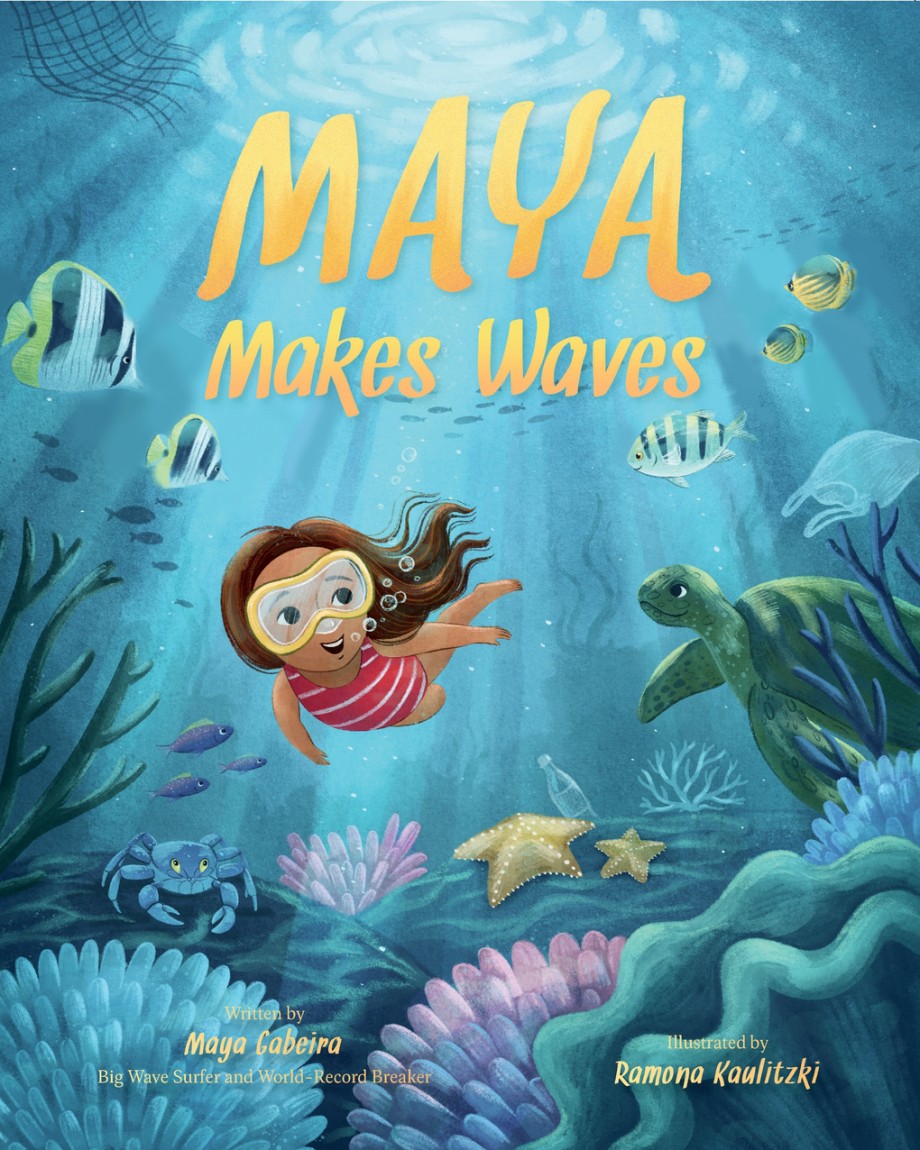 |
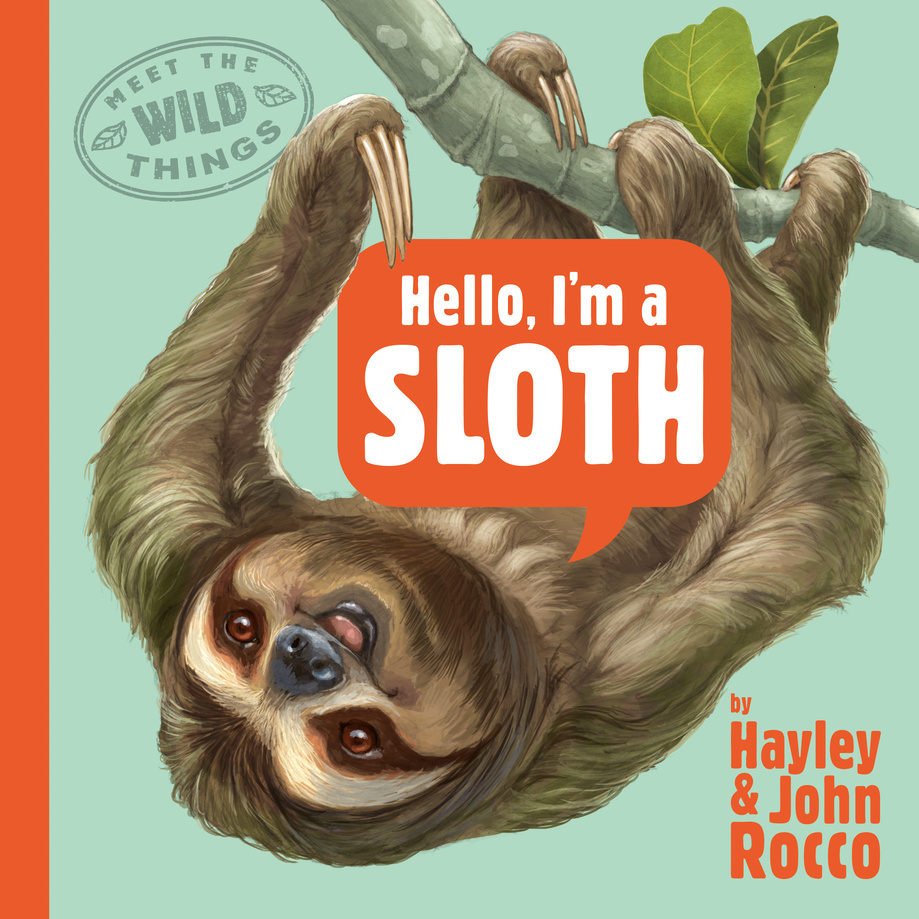 |
Maya Gabeira is the two-time world record holder Brazilian big-wave surfer, best known for surfing the biggest wave ever--73.5 feet--by a woman. Gabeira, an Oceana ambassador and a UNESCO Champion of the Ocean and Youth, is passionately committed to restoring the world's oceans. She is the author of the picture books Maya and the Beast and Maya Makes Waves, (illustrated by Ramona Kaulitzki; Abrams).
Hayley Rocco is the author of How to Send a Hug, as well as Wild Places, Hello, I'm a Pangolin, and Hello, I'm a Sloth (illustrated by John Rocco; Putnam). Rocco, co-founder of Children's Book Creators for Conservation and an ambassador for Wild Tomorrow, a nonprofit focused on conservation and rewilding South Africa, travels the world armed with a pen, a journal, and her camera, discovering stories of wild things and wild places.
Here, Rocco and Gabeira discuss authoring picture books about nature and conservation and discuss wildlife, fascinating animals, and their shared goal of getting children invested in conservation.
Hayley Rocco: Hi Maya, I'm so excited to talk to you! How did you get into conservation?
Maya Gabeira: My passion for conservation started when I was a child. My dad is a politician and activist who was talking about climate change before I was even born. I grew up understanding that nature was being destroyed and ocean animals were endangered.
When I started surfing, I witnessed firsthand the devastation in our oceans--coral bleaching, plastic pollution. As I got older, I began to dig into science reports and started accessing data through my work with Oceana and UNESCO. At first, I was in a small role, lending my voice to causes and to the organization as a whole. As my professional and athletic career grew, I decided it was time to take a bigger role in ocean conservation. Fifteen years later, I'm on the board of directors at Oceana and joining UNESCO's Ocean Decade initiative, all while communicating the science that needs to reach stakeholders, lawmakers, and society. This work has fueled my passion as a children's book author, aiming to inspire the next generation to protect our oceans.
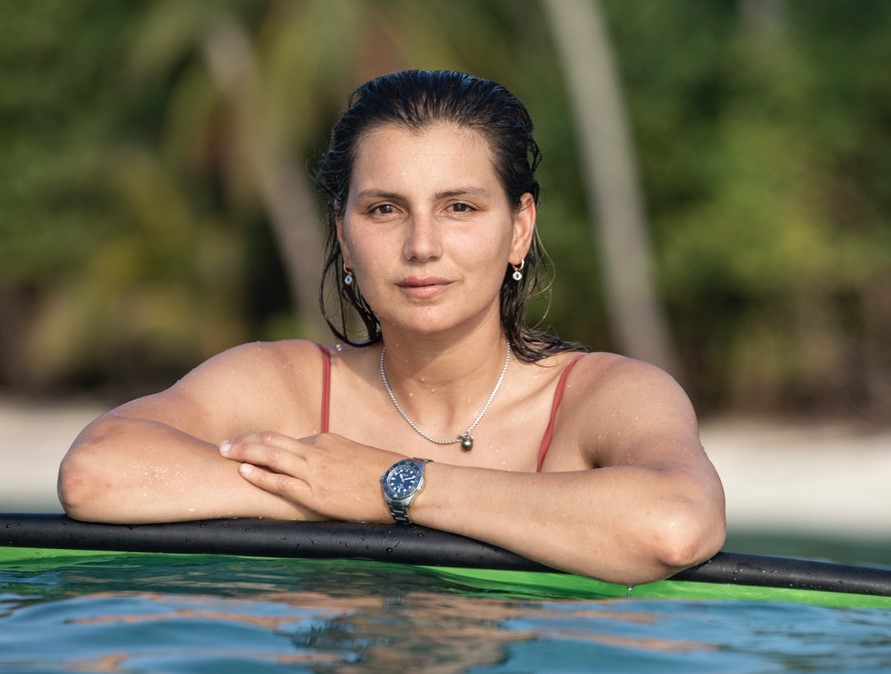 |
|
| Maya Gabeira (photo: Ana Catarina) |
|
Rocco: That's exactly what we have in common! I'm writing a series called Meet the Wild Things, where endangered species introduce themselves to young readers, ages 3 to 7. The hope is to get kids to connect with the animals. If that relationship is built, they will hopefully care about their environment and work to protect it as they get older. It's a lofty goal, to get them to care more about the wild and their future.
Gabeira: That sounds amazing. What are some of the animals you write about in your books?
Rocco: Well, the first is about pangolins because they are the most trafficked animal in the world, but they are also adorable. I fell in love with them when I was doing research for Wild Places, a book about David Attenborough and how the world has changed in his lifetime. The second book in Meet the Wild Things is all about sloths. In the books, the animals tell the reader fun facts about themselves, but they also explain why they're in danger, what people are doing to aid their protection, and how kiddos can help. I think the big disconnect for me when I was younger and learning about climate change was that I didn't know how I could help.
Gabeira: You were in a good school if they were teaching about climate change! When I went to school, I never heard that term. It was only later in life as an adult that I started to learn about it.
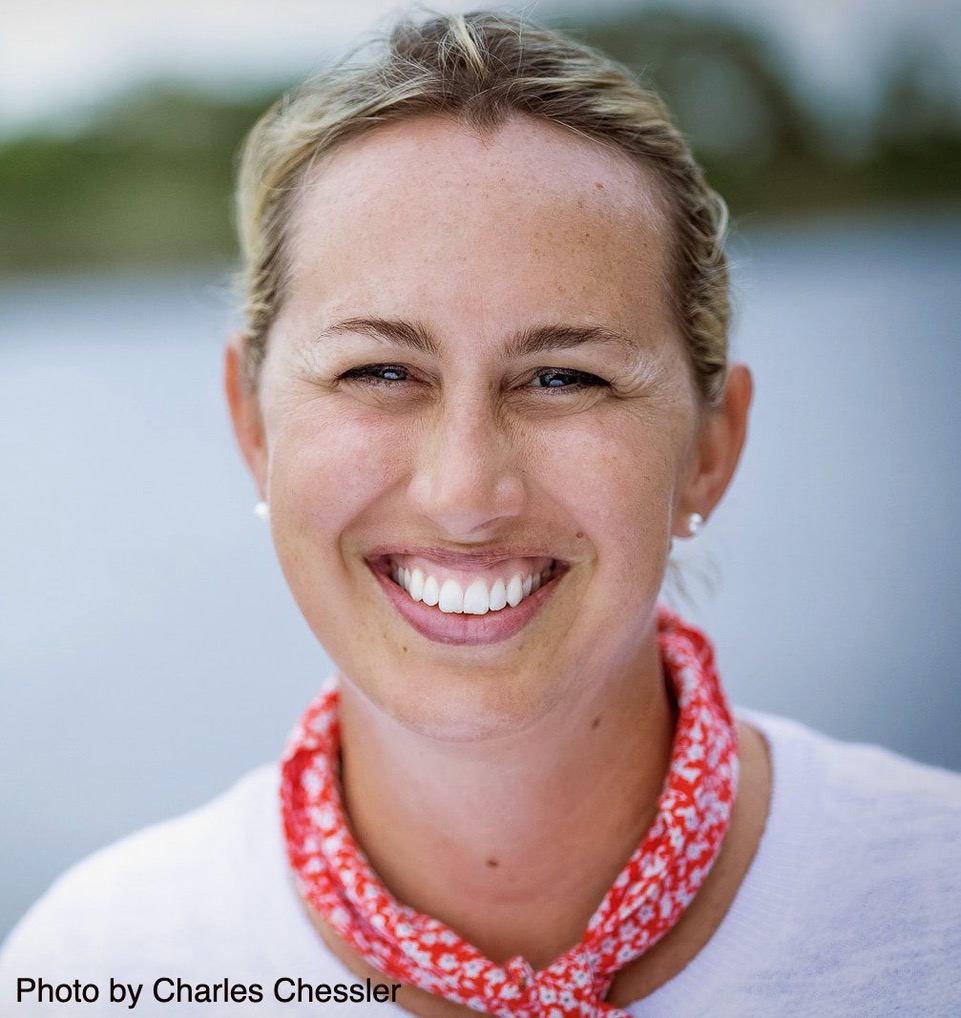 |
|
| Hayley Rocco | |
Rocco: I mean, at that point, they were still calling it global warming! But it was a thing scientists dealt with, right? I knew I would never be that person. So, as a children's book author, I want to connect young readers with the conservation world as best I can.
I started an organization with my husband and illustrator, John Rocco, called Children's Book Creators for Conservation; we went on a trip with Wild Tomorrow, a charity that's all about restoring wildlife in KwaZulu-Natal, South Africa, one of the most biodiverse spots in the world. I was awestruck by the efforts these conservation warriors were making.
Gabeira: It sounds like your organization is doing important work! When I was starting to write Maya Makes Waves, I had this idea of creating a call to action. I wanted to do something that would invite readers to make an impact in the world. I hope to inspire young readers to use their voices in different ways to represent the animals and the ocean, like you are doing with your organization.
Rocco: You're using your work to give a voice to the oceans and presenting reasons for kids to care more about the planet.
Okay, I have a question I've been wondering about: Do you have any stories of experiences with animals while surfing?
Gabeira: Yes! One time in South Africa, I was surfing a big wave break and as I was paddling on my board, I saw a huge whale underneath us. It was shocking! A huge wave broke over the whale and then it disappeared completely--never to be seen again. I was awestruck by the size and power of the whale in its element.
Another time, while surfing in Hawaii, it was late afternoon in an area famous for big waves, and a storm was approaching fast! Trying to swim back, I was caught in a strong current in the bay, and I struggled to reach safety. With the sky turning black and lifeguards shouting warnings, panic set in. Then, a turtle popped its head out of the water beside me. Instantly, I felt calm. I followed the turtle back, and it guided me safely to shore. These experiences with animals in their element are truly humbling.
Rocco: That's incredible!
Gabeira: I put that story in the book to show how smart the turtle was about currents. What other animals are going to be in your series?
Rocco: There are six books coming out. It's starting with sloth and pangolin, and the next book (which comes out in September) is all about the quokka. Then the axolotl is next in March!
I heard that one of your favorite places to surf is in Indonesia--have you heard of the pygmy slow loris?
Gabeira: I have not.
Rocco: That's one of the animals that I'm writing about now! They're small nocturnal primates with big buggy eyes and are the only primate scientists know about that is venomous. They're deadly--pygmy slow lorises put their venom on their teeth when they bite their prey.
Gabeira: What an interesting animal.
Rocco: Right? So, hopefully our picture books will reach and inspire young people.
Gabeira: I hope so. I really want to connect children to the ocean.
Rocco: Absolutely--anything we can do, right?
Book Candy
Book Candy
"America's first board game was an idealized 'travellers' tour' through a young nation," Atlas Obscura noted.
---
Open Culture examines "The Page That Changed Comics Forever: Discover the Innovative 1950s Comic Book That Almost Went Unpublished."
---
Author tour: "Inside the home of New Zealand's greatest crime writer." (via the Spinoff)
Five-Star Stranger
by Kat Tang
Kat Tang's sleek debut novel, Five-Star Stranger, takes aim at the dehumanization of gig workers through a superb story about genuine connections. Here, an unnamed narrator works for Rental Stranger, an app through which anyone can hire him to play a role--proposing boyfriend, college professor, wing man. Only a few self-imposed rules guide the narrator: he won't do anything illegal, and he won't do anything more intimate than hug. Yet his long-term role as father to Lily, a whip-smart nine-year-old unafraid to ask hard questions, might break his most important rule: don't get attached. Through the narrator's floundering attempts to avoid attachments, Tang shrewdly explores how relationships flourish.
Tang's narrator sees Lily every Thursday. His scripted job as a truck driver keeps him on the road, away from his family. In reality, he lives alone, works diligently to maintain his five-star rating by perfectly pretending to be someone he's not, and goes to bed having communicated with no one except clients. Once a week, he dotes over his fake daughter, encouraging her fleeting hobbies, nurturing her fastidious drive to learn, and delicately maintaining the charade. Mari, Lily's mother, hasn't told Lily that she pays the narrator to play the role of her father. Having a seemingly intact family unit is important to Mari, especially when she's otherwise overburdened by keeping her boss happy so as not to lose the little income her position pays. Lily, however, starts noticing discrepancies, and the narrator must work harder to evade her questions, must be perfect.
The narrator's compulsive perfectionism--down to a scheduled morning bowel movement ("fouling up someone else's bathroom destroyed the illusion of a perfect husband, boyfriend, in-law, what have you")--mirrors his deceased mother's fastidiousness. He practices "a subtle wink and mischievous smile" a hundred times in preparation to meet one client. Similarly, his mother was an aspiring actress so obsessed with her craft that the image he remembers of her isn't her actual face but her headshot. Her workaholism spilled into emotional unavailability: "If I comfort you when you're upset, you'll just be upset more often to seek comfort," she once explained, and so the narrator learned to hide negative emotions. Even in death, she holds sway over him. He wants to atone for spewing "hateful vitriol" at her and for bringing home "the stench of sex" as a teenager when his mother thought the act vile. As a Rental Stranger, he wants to "rebalance the cosmic scales by making happy in equal measure to where [he] made hurt."
Guaranteeing happiness, however, comes at a cost--one Tang dexterously shows her narrator acknowledging without having him mine its depth. His phone's photo reel contains zero pictures; his contact list is empty. His studio, which no one ever visits, primarily serves as storage for his job's required wardrobe pieces; takeout menus paper the windows ("efficiently ensuring my privacy and also expediting the process of choosing what to eat") and his kitchenette has two burners he uses only for boiling water. The narrator even treats himself as a purchasable good, evaluating his reflection "as one would a product" and wondering if "it" needs a shave rather than "do I" need to shave. At one point, so unfamiliar with himself, he looks up to smile at someone only to realize it's his own face in a mirror.
Tang thus presents a man so committed to connecting with no one--not even himself--that his clear affection for Lily soars with emotional power. Tang zeroes in on the care that comes with authentic love. The narrator, after noticing Lily's unraveling clothes, watches half a dozen videos on fixing loose threads. He buys her a new winter coat so her wrists won't be exposed to chafing winds. When a boy teases Lily about her nose, the narrator jumps to console her: "I say your nose is perfect, and do you believe some boy in your class or do you believe your dad?" Often, Mari arrives home past the narrator's paid end time, yet he won't replace her with a better-paying client. Accepting Mari's overtime pay doesn't sit right with him either; that money would be better spent, he thinks, on replacing Lily's worn-out skirts.
Amid the wit and humor of the first-person voice is a brilliant condemnation of commodity culture and a shrewd pronouncement that being lonely while surrounded by others is all too common. "Most people didn't realize [what] they truly wanted when they hired me--a nonjudgmental emotion receptacle: part therapist, part priest, part garbage bin," the narrator shares, suggesting that his clients' openness is rarely witnessed by their real contacts. Tang also cleverly weaves in society's ignorance and stereotypes surrounding Asian American individuals. The narrator never directly states his identity (his mother has a Chinese surname; his biological father was white) and he accepts Japanese, Korean, and even simply "Asian" roles freely. He is told by multiple people that he's " 'actually good looking,' the 'actually' undercutting the compliment as though it were an achievement for someone of [his] genetic makeup to be attractive." Tang blends together comedy and tragedy to portray an undeniably sincere man on a fool's errand to live life alone, creating a resonant and heartfelt tale about what's behind--and the necessity for--positive, meaningful relationships. --Samantha Zaboski
What Makes a Relationship Genuine?
An Interview With Kat Tang
 |
|
| Kat Tang (photo: Colleen O'Connell Smyth) |
|
Kat Tang is a graduate of Columbia's MFA program, where she taught as an Undergraduate Writing Fellow. Born in China, relocated to Japan, and raised in California, she is fascinated by how we make and fake human connection in a technologically evolving world. Her short stories and graphic narratives have appeared in Electric Literature, The Margins, Pigeon Pages, and elsewhere. She lives in St. Louis, Mo. Five-Star Stranger (Scribner), Tang's debut novel, follows a professional Rental Stranger resolutely devoted to his perfect rating but whose long-term gig as a young girl's fake father is in jeopardy.
What made you decide to keep the narrator of Five Star Stranger unnamed?
Name and identity--especially for someone like me who tried on various names after immigrating to the United States--are closely tied together; for a narrator who is both unknowable to himself for a large portion of the book and a mystery to the audience, it made sense to me that he would remain unnamed.
Was it also a significant choice that he fills roles for other Asian identities beyond his own?
Asians in America are often mistaken for one another, so why not use this to his advantage? Make money from the ignorance of others?
The narrator is obsessed with maintaining his five-star rating, claiming it can make or break his profile, but it also seems to have slipped into his personal sense of worth.
Yes. I think our society is obsessed with rankings. We (by which I mean, I) can't even choose a restaurant to eat at without checking its reviews. It seemed natural that on an app where people are being ranked and reviewed, this would seep into his sense of self-worth.
It's because of his fraught relationship with his deceased mother that the narrator endeavors to succeed at this job. How did you find ways to instill in your narrator such an authentic portrayal of guilt and emotional strain?
I think guilt can be a powerful motivator, especially for people who are very conscientious. It also can be a very selfish emotion--thinking that your guilt matters or makes a difference. I drew on both of these to flesh out the narrator's emotional tension.
The narrator's arrangement to be Lily's fake father is his only long-term assignment. But because he otherwise spends his time alone, this also makes it his only relationship, right?
Yes, and that isolation is self-imposed as part of his atonement for his relationship with his mother. He's afraid of making connections because he's afraid of hurting or being hurt by other people, but he wouldn't readily admit this to himself. Instead he would say that he's too busy to maintain relationships, that any outside relationships would compromise his ability to be a perfect Rental Stranger, or that there's no point in fostering a relationship for free.
At one point, the narrator notes that sometimes his customers "conflate kindness with love," yet he seems to agree with Darlene when she describes the inability to love as "something defective in you that you're not capable of kindness." Why, then, does he work so hard to keep kindness and love compartmentalized?
The former, what the narrator performs, is a pretend kindness. It's like the "let me know if you need anything" when you know that the other person isn't going to take you up on the offer--a performance, an act. I think what Darlene is talking about, however, is a true kindness--a care that extends beyond the self. A kindness that bridges the self to others. He keeps this difference in mind because he's afraid of the latter, afraid to tether himself to another--to love.
Lily, the narrator's fake daughter, doesn't know he is not her real dad. What was the challenge in creating a bond between two characters based on a lie?
The difficulty was balancing the lie with the true affection that the narrator has for Lily. Even though he is paid to act like a perfect father, his feelings for Lily urge him to act in imperfect ways: being rude to Lily's friend Piri, for example. This blurring of the lines of what makes a relationship "genuine"--affection? official title? thoughts? actions?--is something I hope readers will be left questioning.
There are such beautiful details marking his love for Lily, such as when he realizes her exposed wrists would chafe in the winter air. How did such vivid images come to you?
Some time ago I began to associate the act of noticing with love. When writing from the perspective of someone who really cares about someone else (that second type of "kindness"), I try to think about what they might see and what small details they would pay attention to that no one else, not even the person they care about, notices.
Are there any books that inspired your novel?
I was inspired by the article in the Atlantic, "How to Hire Fake Friends and Family," by Roc Morin back in 2017, and wrote a very early rough draft then. By the time I was ready to write this version in 2021, I had a couple books rattling around in my head: The Sympathizer by Viet Thanh Nguyen, A Personal Matter by Kenzaburo Oë, The Sellout by Paul Beatty, and A Visit from the Goon Squad by Jennifer Egan, among many others.
What are you working on next?
I'm actually quite far into the first draft of a novel about a woman from the Bay Area who runs away from her problems by traveling to Japan, where she befriends a mysterious, enchanting woman. When her new friend goes north to visit family, the 2011 earthquake and tsunami strikes--cutting off all contact. In an effort to find her new friend, the protagonist travels to Tohoku to search among the destruction. It's been one hell of a ride researching and writing it so far. --Samantha Zaboski
Rediscover
Rediscover: Lewis H. Lapham
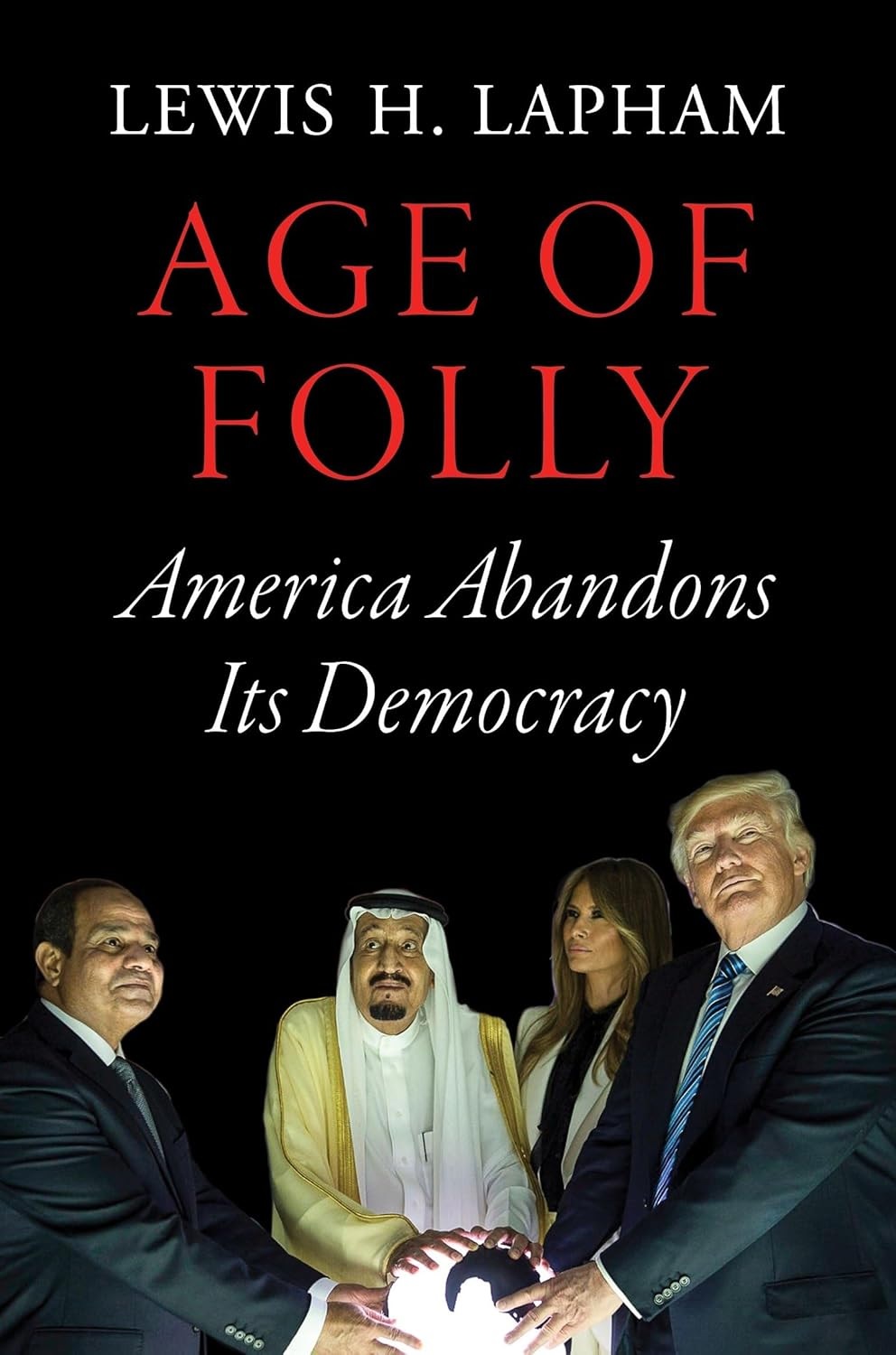 Lewis H. Lapham, "the scholarly patrician who edited Harper's Magazine for nearly three decades, and who in columns, books, and later his own magazine, Lapham's Quarterly, attacked what he regarded as the inequities and hypocrisies of American life," died July 23 at age 89, the New York Times reported.
Lewis H. Lapham, "the scholarly patrician who edited Harper's Magazine for nearly three decades, and who in columns, books, and later his own magazine, Lapham's Quarterly, attacked what he regarded as the inequities and hypocrisies of American life," died July 23 at age 89, the New York Times reported.
After a decade as a newspaper reporter and magazine writer, Lapham became the managing editor of Harper's from 1971 to 1975, then editor-in-chief from 1976 to 1981 and again from 1983 to 2006. He "offered a blend of high culture and populism: the fiction of John Updike and George Saunders mixed with reports on abortion fights, global warming and the age of terrorism--generally, but not always, with a progressive eye," the Times wrote. His last book, Age of Folly: America Abandons Its Democracy (2016), argued that the election of Donald J. Trump was the culmination of decades of degradation of U.S. democracy under a number of Republican administrations. It is available in paperback from Verso.
In 2006, Lapham retired from Harper's and founded Lapham's Quarterly, an intellectual journal that used the lessons of history and the persuasions of literature to dissect modern problems. "The idea was to bring the voices of the past up to the microphone of the present," he told the Times in 2009. "History doesn't repeat itself, but it rhymes."
Many of his books had their genesis in his essays for Harper's, including Fortune's Child: A Portrait of the United States as Spendthrift Heir (1980), a collection of thematically unified columns around his metaphor of America as a spoiled rich kid; and Hotel America: Scenes in the Lobby of the Fin-de-Siècle (1995), which portrayed a society of lost values as it approached the turn of the millennium. In Gag Rule: On the Suppression of Dissent and the Stifling of Democracy (2004), Lapham indicted the Bush administration for what he called its efforts to deceive the nation about the Iraq war's origins and aims.
Lapham also wrote for Commentary, Vanity Fair, Fortune, Forbes, and many other publications. He won the National Magazine Award in 1995 for his columns in Harper's and the 2002 Thomas Paine Journalism Award, and he was inducted into the American Society of Magazine Editors Hall of Fame in 2007.
In a tribute to its "editor emeritus," Harper's noted: "His life and career, at Harper's and later at Lapham's Quarterly, were distinguished by a different approach, not to produce a magazine that would clothe readers 'with opinions in the way that Halston or Bloomingdale's dresses them for the opera,' but rather one that would aim 'to ask questions, not to provide ready-made answers, to say, in effect, look at this, see how much more beautiful and strange and full of possibility is the world than can be imagined by the mythographers at Time or NBC.' "


